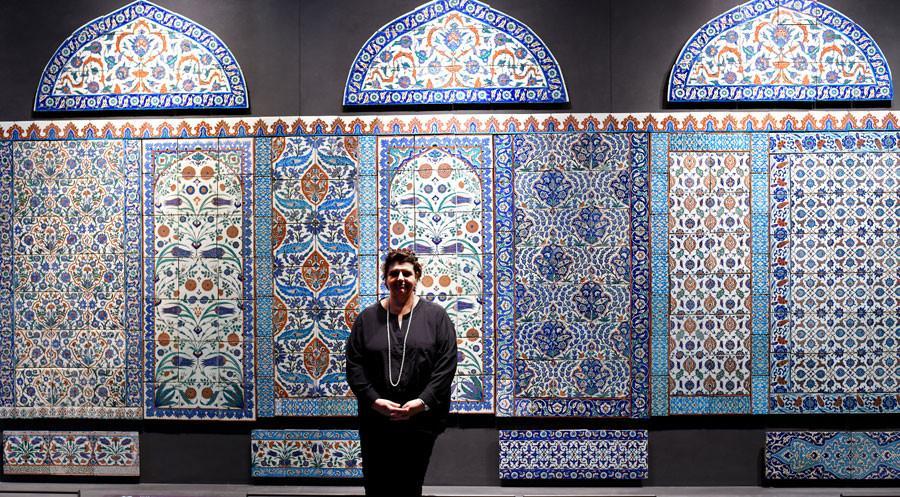
Yannick Litz, director of the history of the Islamic art collection at the Louvre Museum, has said the section was one of the largest in the world with 17,500 Islamic artifacts.
One of the world’s most important museums, the Louvre Museum in Paris displays nearly 35,000 artifacts. The museum’s Islamic art collection is home to nearly 17,500 artifacts.
The artifacts in this part of the museum, which was visited by 8.1 million tourists last year, belong to the 12th century period from the first years of Islam until the mid-19th century.
The tile panel belonging to the Sultan Selim II tomb in the garden of Istanbul’s Hagia Sophia Museum is one of the most valuable pieces exhibited in the Louvre Museum and the Islamic artifacts section.
The Culture and Tourism Ministry continues its initiatives for the return of this panel, which was taken abroad illegally in the past.
For the first time in 1905, a small section was allocated for Islamic artifacts in the museum. The number of Islamic artwork increased, especially after World War II. Thus, a separate section was opened in the museum to display Islamic art in 2003. Former French President François Hollande had done the official opening of the section.
At the entrance of the Islamic arts department, a section was devoted to the introduction and presentation of the historic Umayyad Mosque in Damascus, Syria’s capital. In this section, the sword of Süleyman the Magnificent and the İznik tiles are among the works of interest.
Another striking work in this section is a vessel, which was made between 1320 and 1340 and is said to be from the Mamluks. This work carries six signatures of the artist. It is said there is no other work in the world the artist has signed this way.
One of biggest collections
Speaking to state-run Anadolu Agency, the director of the collection said the artifacts were a part of the universal culture.
“Interest in Islamic art works became part of French culture in very early periods. Louis XIV were collecting these works,” Litz said, adding that a different department for the Islamic artworks opened in 2003 in the museum but due to the construction works, the official opening was made in 2012.
“The Islamic Arts section in the museum is undoubtedly one of the largest collections in the world,” she added.
The director said the section played a special role, especially after terror attacks and showed how Islam and Islamic art was in reality.
They have received positive reactions from the visitors of that section and the number of visitors to the museum have decreased after the terror attacks in Paris, Lintz said.
“Today, dealing with Islamic art is also dealing with prejudices [against Islam],” the director also said.
Among the artwork in this section, her favorite was the embroidered ivory box made in Andalusia in 968 A.D., she said.
Lintz said she has been closely following the issue on the return of the tile panel belonging to the tomb of Ottoman Sultan Selim II since 2003 and the issue should be solved by the presidents of both countries.
She said the return of the panel could be solved with dialogue between the two countries.
“I love Turkey and I want to work with this country. I recommend Turkish authorities to investigate how this panel left Turkey and how it was purchased by the Louvre Museum. This is not a political recommendation but a recommendation by a person who loves Turkey,” said the director.